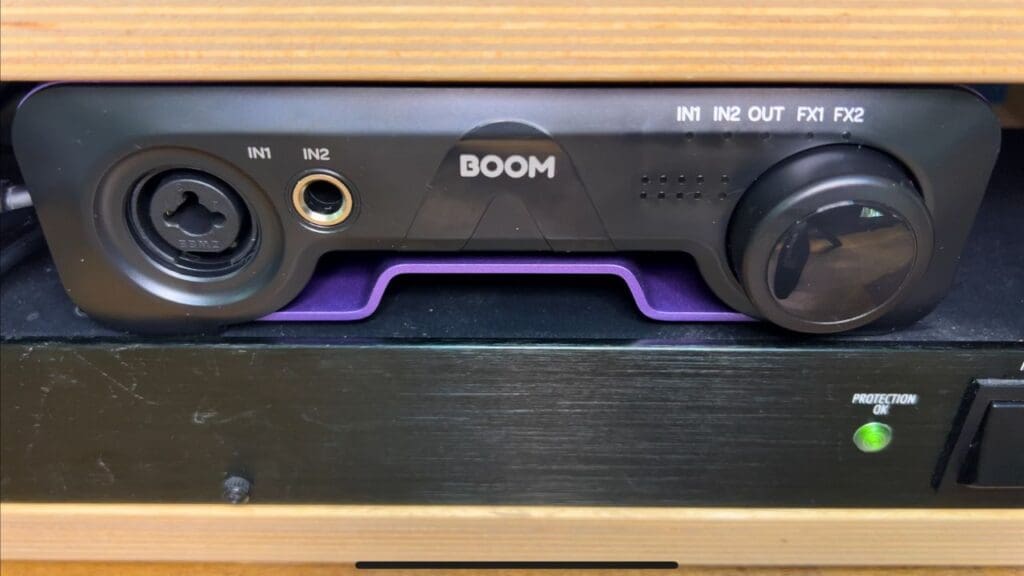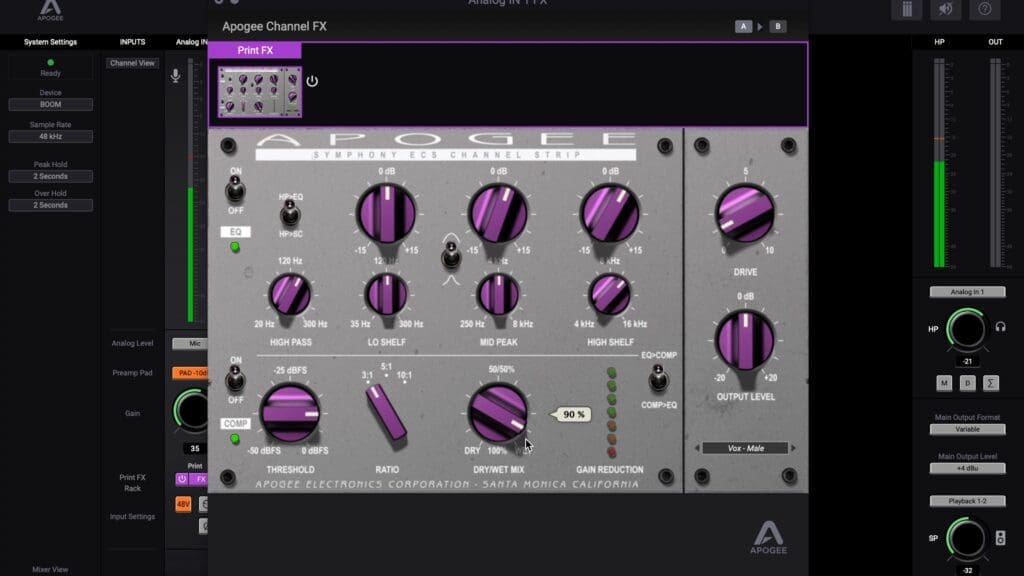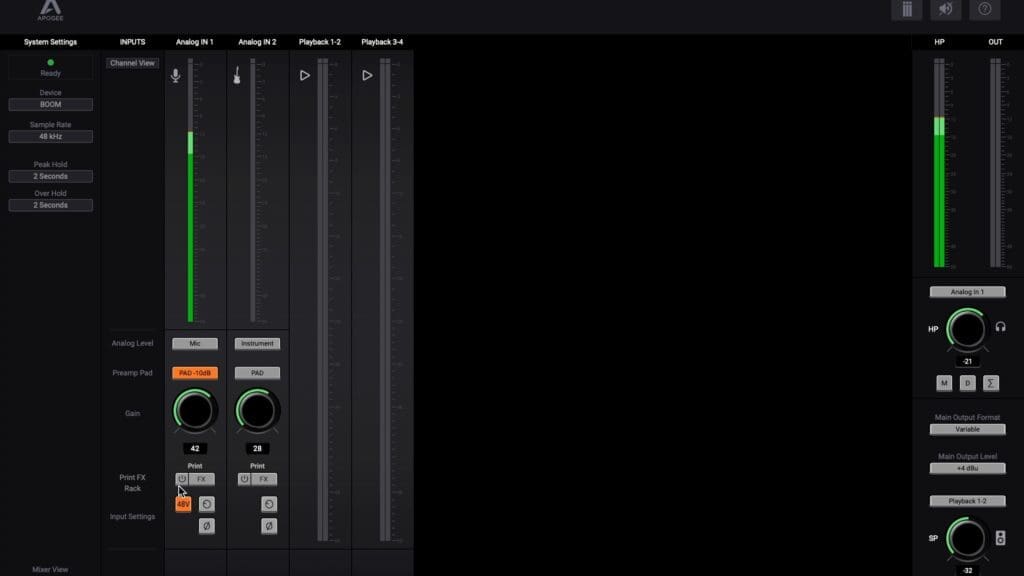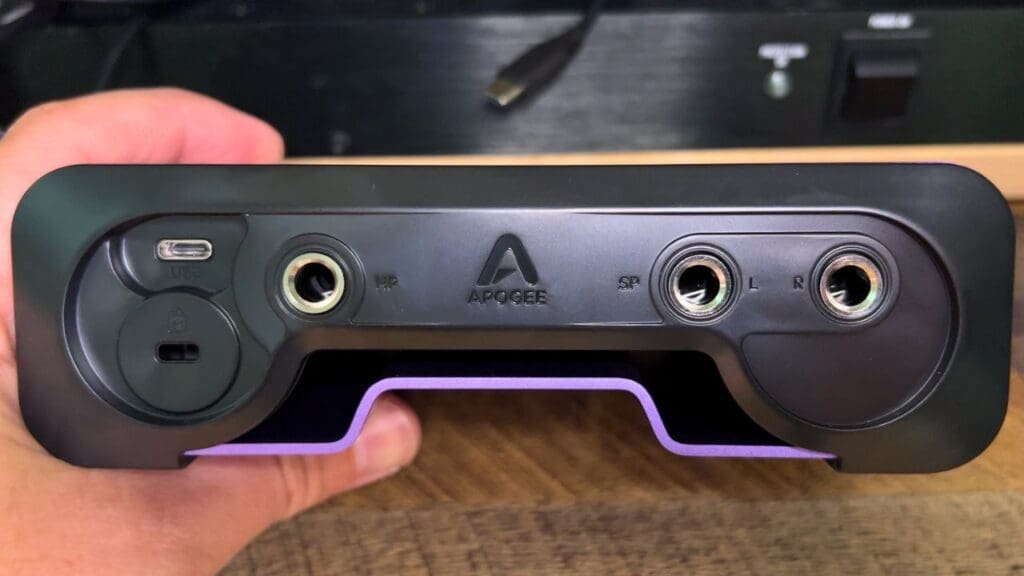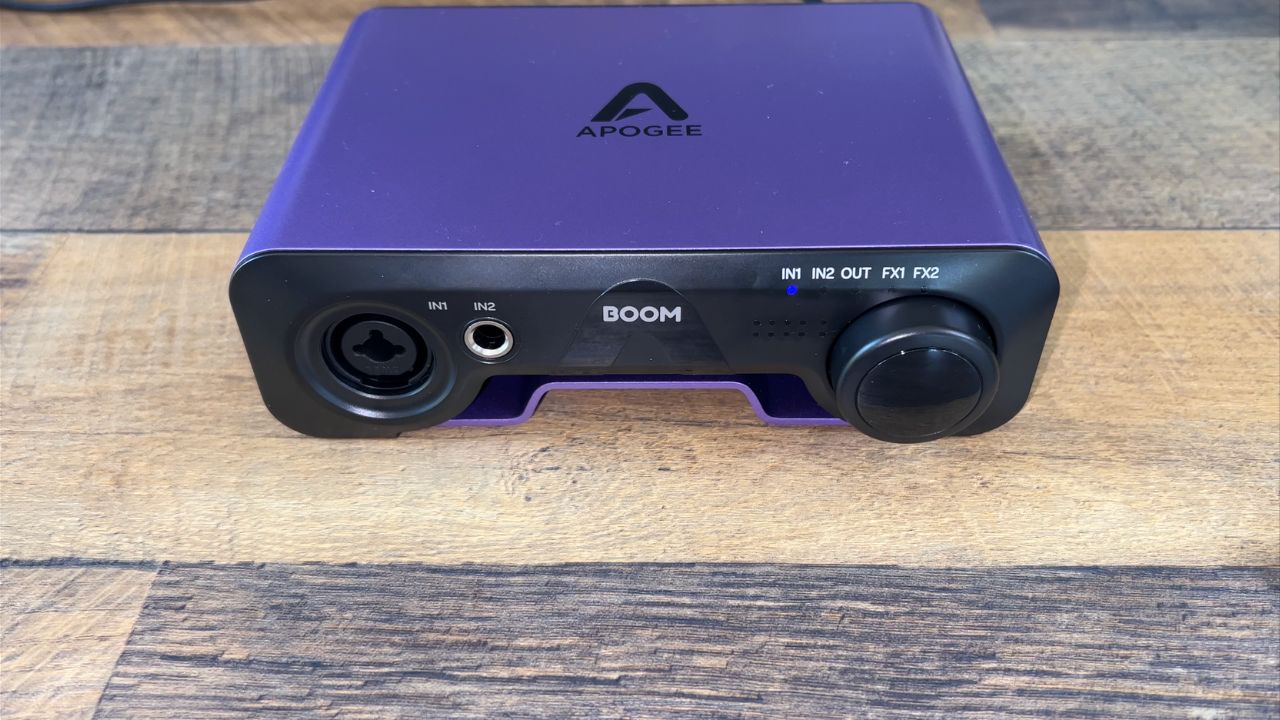
When it comes to podcasting and live streaming, the quality of your audio can make or break your content. That’s where the Apogee Boom comes into play.
As an audio interface specifically designed for podcasters, streamers, and musicians, it promises to deliver exceptional sound quality and a host of features that will elevate your audio production experience.
We’ve been users of Apogee products for damn near a decade! So, anything made by Apogee has The Podcast Haven Stamp of approval.
In this post, we’ll delve into the intricacies of the Apogee Boom, exploring its key features, price range, and the additional software and offers that accompany it. We’ll also touch on its technical specifications and user experience, providing a comprehensive Apogee Boom review.
Whether you’re a seasoned podcaster or a budding streamer, understanding the capabilities of your audio equipment is crucial.
One last thing before we dive in. This post contains Amazon affiliate links. As Amazon affiliates we earn from qualifying purchases. This is at no extra cost to you and the money we make from affiliate sales helps us keep the blog alive.
Now, let’s give it go.
Apogee Boom: An Overview
Boom is a portable, bus-powered USB audio interface designed with a focus on quality and affordability. Its target audience includes musicians, podcasters, and live streamers who require high-quality sound recording and live streaming capabilities without breaking the bank.
Apogee Digital is known for legendary Analog to Digital conversion because of its precise engineering and high-quality components. Essentially this means Apogee products produce unrivaled audio clarity.
This reputation has made Apogee a go-to choice for content creators and audio professionals.
Build and Design
The device is housed within a purple metal shell, ensuring its durability. And, we’ve gotta say the purple looks rad!
Boom is designed with a single large rotary encoder, which controls three different functions, indicated by a row of purple LEDs. A double row of green LEDs serves as a meter and indicates level settings.
It looks like a sleek futuristic audio interface. You can tell a lot of thought went into the look of Boom. It doesn’t look like your typical audio interface.
To see what the Apogee Boom looks like in person, watch our unboxing video on our YouTube Channel.
Apogee Boom Target Audience
Boom’s target audience is quite diverse.
It’s perfect for musicians who need a portable and high-quality audio interface for recording and live performances. Podcasters can benefit from its high-quality mic preamp, and live streamers can take advantage of its loopback mode. We’ll cover loopback mode further down
Price and Affordability
The exact price range of the Apogee Boom may vary depending on the retailer, but it’s positioned at the more affordable end of the market.
Key Features of Apogee Boom
As as podcast prodcuers, we’ve always been intrigued by the features that set apart one audio interface from another.
The Apogee Boom is no exception.
It’s packed with a variety of features that make it a standout choice for podcasters, streamers, and musicians alike.
Apogee Boom Onboard DSP
The Apogee Boom is equipped with onboard Digital Signal Processing (DSP). In short, DSP offloads some of the processing power from your computer and gives it to your audio interface.
Thus, it makes your audio interface do the work and reduces the load on your computer’s CPU.
Not taxing the power of your computer? It’s really a no-brainer, and many audio companies are increasingly using this technology.
Apogee added DSP to Boom mainly because of the free ECS Channel Strip you get when you purchase the device.
With this channel strip, you can record with eq and compression on the way in and not worry about adding these things in post-production. This saves you time, computer power and makes you commit to your tone, which makes you a better content creator.
This is only possible with Apogee’s DSP.
Apogee’s Pristine Mic Preamp
One of the key features of the Apogee Boom is its powerful mic preamp. This preamp is capable of generating some serious gain, enough to handle a gain-hungry dynamic mic such as an SM7B without the need for a Cloudlifter.
This makes it a versatile choice for various audio recording scenarios. Additionally, the Boom boasts pristine conversion with dynamic ranges of 122dB A-weighted and 114dB A-weighted respectively. This is tech talk for saying that your recordings are going to be a cut above the rest.
Apogee Boom Headphone Amp
Boom also features a studio-grade headphone amp and a Digital-to-Analog Converter (DAC).
The headphone amp’s frequency response is almost dead flat, and its output impedance of 0.5 Ohm will work well with virtually any set of cans you plug in, including high-impedance audiophile models.
This means you can monitor your recordings with the utmost accuracy. It can be a shock if you’re not used to a high-quality headphone amp.
When you put on headphones when using your Boom, it’s almost scary how much you can hear and how amplified the sound is.
Honestly, it takes a bit of getting used to.
Most headphone amps don’t provide the level of clarity that Boom does. When you record with Boom, you instantly become aware of how your room and microphone sound. It’s not forgiving!
While some people may not like this, it’s great because you instantly start trying to improve your sound. With lower-quality headphone amps, you may not get an accurate picture of how you and your room sound.
Loopback Mode For Live Streaming
Lastly, the Apogee Boom includes a loopback mode for live streaming production. This feature allows you to mix your microphone audio with your computer’s audio and then send it back out for your audience to hear.
This is particularly useful for streamers who want to share their computer’s audio along with their commentary.
Perhaps you like to play music while you play video games on twitch. Or, maybe you like to play SFX while you do a live podcast.
Apogee loopback makes this possible.
Additional Software and Offers
The Apogee Boom is not just an audio interface; it’s a comprehensive solution for audio recording and streaming, thanks to the additional software and offers that come with it.
Apogee Control 2 Software
Apogee Boom is accompanied by the Control 2 software, a powerful tool that enhances the functionality of the audio interface.
This software is compatible with macOS, iOS, and Windows, making it versatile and accessible for users across different platforms.
The Control 2 software allows you to adjust digital preamp gain, sensitivity pad/polarity, and provides access to handy monitoring features such as mono sum and dim.
It’s an essential component that ensures you can fully utilize the capabilities of the Apogee Boom.
If you prefer to work in the box, you can literally control all the features of Boom from within your computer, iPhone, or iPad.
It’s awesome!
Apogee Boom Special Offers
In addition to the Control 2 software, the Apogee Boom comes with special offers that add value to your purchase.
These include Ableton Live Lite, a streamlined version of the popular digital audio workstation, and the Apogee Soft Limit plugin, a tool that provides optimal levels without clipping.
You also get discounts on Apogee plugins, further enhancing the value of the Apogee Boom.
Exclusive 60-day Plugin Trial from Neural DSP
To top it off, the Apogee Boom offers an exclusive 60-day plugin trial from Neural DSP. This gives you the opportunity to explore and experiment with high-quality plugins from Neural DSP, a renowned name in the audio software industry. It’s a fantastic opportunity to expand your audio processing capabilities and discover new sound possibilities.
Apogee Boom Tech Specs
Cant forget to talk about Boom’s recording specs. Especially when they’re first class.
Recording Quality
Boom offers up to 24 bit / 192kHz recording. This means that it captures a vast amount of detail in your audio, resulting in high-fidelity recordings.
The 24-bit depth provides a wide dynamic range, capturing the quietest and loudest parts of your audio with equal precision.
The 192kHz sample rate is far beyond what the human ear can perceive, ensuring that your recordings are incredibly accurate and detailed.
Apogee Boom Inputs
The Apogee Boom features a 2×2 USB-C audio interface. This interface features one XLR 1/4 inch combo jack, and one 1/4 inch instrument jack. These inputs can be used independently or simultaneously.
For example, you could record a solo podcast using the XLR input. Or, you could record vocals and a keyboard at the same time.
Additionally, the 1/4 inch input can be used to record an electric guitar, bass, drum machine, sampler, and more!
Apogee Boom Outputs
Boom has 2 outputs. It’s got an L/R stereo output on the back of the unit. This is for connecting your studio monitors.
Then there’s the headphone output on the front of the device.
It should be noted that you can’t have headphones and studio monitors plugged in simultaneously. If you do this, it disables both outputs, and you won’t get sound from either output.
This is a huge bummer!
Additionally, the headphone jack is on the back of Boom. Suppose you wanted to switch between headphones and studio monitors.
In that case, you’d need easy access to the back of the unit and constantly plug in and unplug your headphones.
Meh.
User Experience
Whether you’re a beginner just starting out or a pro, you’ll find that the Apogee Boom is incredibly user-friendly.
It’s as simple as plugging in the USB-C cable, opening your preferred recording software, and you’re ready to go.
Weighing just two pounds and with a compact design, it’s easy to carry around, making it perfect for those on the move or with limited space.
Apogee Boom Final Thoughts
When it comes to top notch audio interfaces, the Apogee Boom stands out as a top-tier choice for solo podcasters and streamers. Its user-friendly design, high-quality sound, and versatility make it an excellent investment.
From its detailed technical specifications, including best-in-class Apogee conversion and mic preamp technology, to its additional software and offers, it’s clear that the Apogee Boom is more than just an audio interface.
It’s a comprehensive tool for audio production.
In summary, if you’re looking for an audio interface that delivers on all fronts, the Apogee Boom is worth considering.


